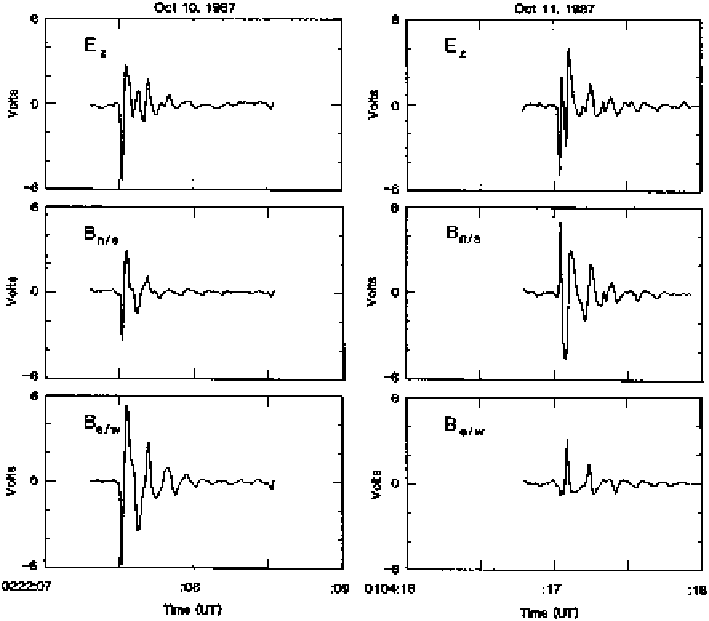Geoscience Reference
In-Depth Information
Fig. 4.5
Typical Q-bursts that are believed to be signature of the Earth-Ionosphere cavity
excitation due to extremely large lightning flashes. The temporal dependencies of the vertical
electric component E
z
and orthogonal magnetic components B
n=s
and B
e=
w
were recorded on
October 10 (
left
) and October 11 (
right
), 1987. Taken from Sentman (
1989
)
by the ground-based station. The resonant frequencies measured on the satellite
in the range 8-34 Hz differ from that measured on the ground by no more than
several percent. Interestingly enough, the amplitudes of the nighttime spectra were
on average one order of magnitude greater than the amplitudes of the daytime
spectra. To explain this effect, one may suppose that the ionosphere under nighttime
condition is more transparent to the resonant ELF radiation penetrating through a
conductive layer of the ionosphere and coming into the outer space (Surkov et al.
2013
). This result testifies to the fact that the satellites can be used for the study of
lightning parameters in the range of Schumann resonances.
Immediately below the frequency interval covered by the Schumann resonances
are the spectra of the ionospheric and magnetospheric Alfvén resonators. This kind
of resonances is referred to as the class of field-line resonances for shear Alfvén
waves. In the next sections we study in earnest the physical mechanism of this kind
of oscillations.

Search WWH ::

Custom Search